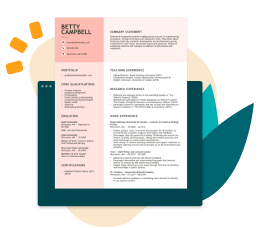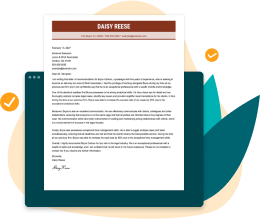LiveCareer Report: 59% of U.S. Workers Feel Uneasy Taking Time Off
Summer is in full swing, but according to the new PTO Culture Crisis Report from LiveCareer, many people have hesitations and concerns when it comes to using the paid time off (PTO) they accrue.
The study of more than 1,000 employed U.S. workers found that unhealthy work cultures surrounding time away from the office are a major factor. Nearly 60% of workers say they feel some form of PTO anxiety when it comes to taking time off from work, even though 45% receive more than two weeks of PTO per year.
Key Takeaways
- Toxic workplace norms restrict vacations: One in 3 workers (33%) feel pressure not to use all their PTO, and 9% say their employer actively discourages time off.
- Fear and PTO guilt still dominate time-off decisions: 59% of workers have anxiety about taking PTO. Top concerns include work piling up, missing out on opportunities, and being perceived as less committed.
- Workload undermines policy: 49% report their company says it supports vacation, but workloads make taking time off unrealistic.
- PTO is earned but not used: While 45% receive more than two weeks off annually, 52% plan to take less than one week this summer.
- Leadership sets the tone: 20% are less likely to take time off from work if their manager doesn’t take vacation.
- Workers want support: Employees would feel more confident taking time off if they had better financial stability (51%), coverage for their work (25%), and supportive leadership (18%).
Why Workers Hesitate to Take PTO
For many workers, taking time off isn’t as simple as requesting vacation days. Underlying anxieties tied to workload, perception, and job security often stand in the way of using earned time off. The top concerns include:
- Work will pile up while I’m gone: 19%
- I’ll miss something important or lose an opportunity: 19%
- People will see me as less committed: 12%
- I’ll get laid off or replaced: 8%
Pressure to Not Use PTO
While many workers report feeling at ease when taking time off, nearly half (42%) still face subtle or overt pressure when trying to use their earned PTO:
- 33% feel pressure to not use all PTO accrued.
- 9% feel their workplace actively discourages using all PTO earned.
Company Culture Undermines PTO
Many employers claim to support taking time off, but behind the messaging, workplace realities often tell a different story. For more than half of workers, unmanageable workloads and mixed messages from leadership make it difficult to truly disconnect, as the following findings suggest:
- Company says vacation is supported, but workload makes it difficult to take: 49%
- Employer discourages vacation in subtle, indirect ways: 6%
- Taking vacation is explicitly discouraged: 2%
Additionally, company leadership sets the tone for vacation behavior. One in five workers (20%) say they’re less likely to take time off when their manager or leadership rarely does.
The Vacation Gap: What Workers Get vs. What They Take
Nearly half of employees surveyed (45%) receive PTO packages longer than two weeks, but many plan to take only a fraction of that time off this summer. The data reveals a clear misalignment between vacation days available and what’s actually used.
Length of Planned Summer Vacation:
- A weekend getaway (1–3 days): 16%
- A short break (4–6 days): 31%
- A full week: 33%
- More than one week: 21%
Amount of PTO Received Per Year:
- Unlimited: 9%
- 21+ days: 20%
- 11–15 days: 16%
- 6–10 days: 14%
- 1–5 days: 11%
- None: 18%
What Workers Need to Feel Confident Taking Time Off
To overcome the fear, guilt, and pressure surrounding PTO, workers say they need more than just a policy; they need meaningful support from their employer. From financial stability to better work coverage while on PTO, these are the top factors that would make employees feel more confident requesting time off:
- Better financial stability: 51%
- More PTO: 26%
- Backup or coverage for their work: 25%
- Mental health days built into benefits: 18%
- Supportive managers and leadership: 18%
- Less fear of layoffs: 12%
- Clearer company policies on time off: 7%
For press inquiries, contact Elizabeth Buccianti, senior manager public relations, at elizabeth.buccianti@bold.com.
Methodology
The findings presented in this report are based on a nationally representative survey conducted by LiveCareer using Pollfish on May 7, 2025. The survey collected responses from 1,003 U.S. workers currently employed and explored their experiences with employer support for taking PTO, comfort level using accrued PTO, and factors that prevent taking time away from work. They answered different types of questions, including yes/no, open-ended, scale-based questions where respondents indicated their level of agreement with statements, and multiple-choice where they could select from a list of provided options. Participants represented a broad cross-section of the working population in terms of gender and age. The sample included 54% male respondents (540) and 46% female respondents (463). Age-wise, the distribution was also balanced: 19% were aged 18–27 (Gen Z), 27% were aged 28–43 (Millennials), 27% were aged 44–60 (Gen X), and 27% were aged 61–79 (Baby Boomers). All participants were screened to ensure they were currently residing in the U.S. and actively employed at the time of the survey. The data collection adhered to Pollfish’s quality control standards to ensure the accuracy and reliability of the results.
About LiveCareer
LiveCareer's online Resume Builder is designed to empower its users to get better jobs and improve their job search. A one-stop shop among AI resume builder tools, LiveCareer features cutting-edge resume templates, a powerful cover letter builder, and extensive free career resources to support job candidates in reaching their professional goals. Trusted by over 10 million users around the world, LiveCareer has been publishing expert advice from Certified Professional Resume Writers since 2005. LiveCareer’s career tips have been featured in renowned media outlets, including Bloomberg, Forbes, and Newsweek. Stay connected with LiveCareer's latest updates to improve your job search on Facebook, Instagram, LinkedIn, and X.






